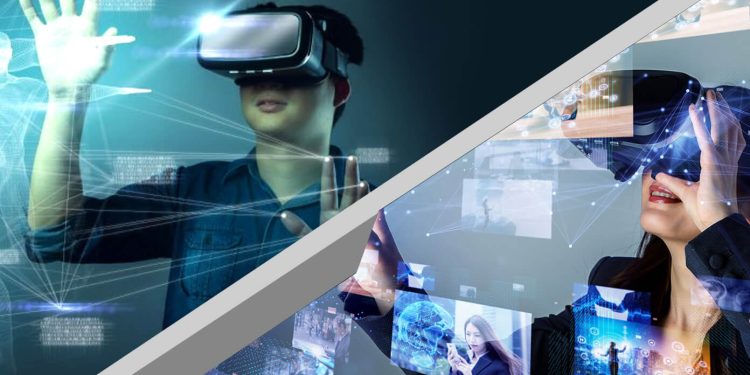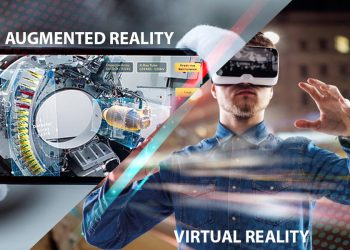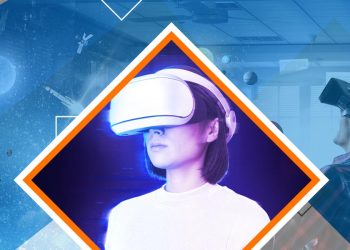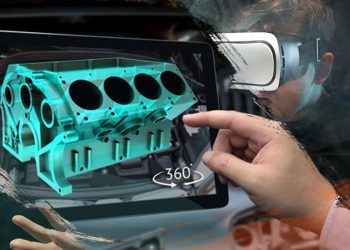VR and AR technology has witnessed significant growth over the years. It has immense potential to change the world as we know it. From the way we learn new things to the way, we shop, AR and VR technology have opened up new growth points for businesses around the world. Its market is projected to grow to $198 billion in the next three years. With a vast market to tap into, AR and VR will be driving several trends and innovations in 2022. This article discusses the most significant ones.
Metaverse powered by the extended reality
Also known as social media 2.0 or Web 3.0, the metaverse concept is garnering lots of attention right now. It is a concept of a 3D digital world consisting of virtual spaces that can be explored using a virtual avatar.
What is XR?
XR, which is the acronym for extended reality, is a term that encompasses AR (augmented reality), VR (virtual reality), and MR (mixed reality). It uses a human-to-PC screen interface and modifies it using AR, VR, or both.
How does XR mingle with the metaverse?
Technological growth in XR allows for the creation of a future that seamlessly blends reality and virtual worlds. AR and VR will enable immersive, experiential environments that are central to the whole concept of the metaverse. The broader adoption of AR and VR technologies has made the idea of online virtual spaces more understandable for people. With the help of AR, virtual objects can be embedded into the real physical world, and VR immerses you in a 3D virtual environment using 3D computer modeling.
New Travel & Tourism Experiences powered by AR and VR.
The COVID-19 pandemic has badly hit the tourism industry, but looking at the brighter side, it has also hastened the testing and rollout of advanced technologies, such as Virtual Reality and augmented reality. Thanks to AR, VR, and MR technology, travelers can now experience a region and test a location before spending the money to travel there. People can make smarter decisions based on their virtual experiences and better understand an area before investing in trip expenses. With the help of XR applications, people can also re-experience their holiday after they’ve returned home. For example, if you enjoyed exploring the Great Barrier Reef with your family through an AR/VR-powered interactive website, you can re-experience the biodiversity of the reef and the clear, tranquil currents of the Pacific Ocean.
These ‘real-like’ experiences can help entice post-pandemic visitors worldwide and revive the tourism industry in 2022.
Lighter and more feature-rich hardware
VR and AR devices are pretty bulky as of now. Today’s smartphones, computers, pen drives, and all other modern gadgets are available in smaller models, but AR and VR devices remain massive. Their bulky housing, heavy cables, and straps serve as a significant limitation when it comes to the use of this technology.
So this year, the spotlight will be on more advanced hardware and headsets that are lighter in feel and aesthetic in appearance. A California-based startup called Mojo Vision has already come up with the idea of AR contact lenses capable of projecting information onto the retina.
Besides being smaller in size, the more advanced hardware will be more feature-rich. For example, interfaces controlled with eyeball movements have already been cracked. Realistic movement within virtual environments may be enabled.
Consumer versions of Teslasuit, which astronauts use during training, may become available on the market in 2022.
WebAR – the new way to experience AR
Until yesterday, you could only enjoy the AR experience through mobile devices by downloading and installing mobile applications, but things will soon change with WebAR. With the advent of WebAR, users will be able to interact with AR in the web space. In simple words, people can get AR exposure on web browsers, such as – Google Chrome, Mozilla Firefox, irrespective of the devices being used. There will be no need to download any application to enjoy AR’s immersive and unique experience.
Retail Experiences like never before
XR technologies have opened new avenues for innovation in retail. More engaging and immersive online shopping experiences that mimic brick-and-mortar outlet experiences can be created using VR. For example, customers can try clothing and accessories using digital avatars and engage with chatbots for better and more informed shopping experiences.
Brick and mortar stores can be fitted with AR technologies to provide new and exciting shopping experiences. For example, fashion stores can be equipped with virtual mirrors powered by AR technology that allows customers to try on different products without even touching them! If they like what they try, they can be directed towards the shelves where those products can be found.
5G to facilitate wireless and cloud-based AR and VR
2022 may be the year when 5G will become mainstream. The result will be 20 times faster than existing mobile networks. The benefits won’t just be limited to speedier data transmission; it will also facilitate wireless and cloud-based VR and AR with the help of large data volumes. Very soon, users will be able to stream VR games from cloud servers without having to buy expensive gaming PCs. 5G technology will also lower the barriers to entry for many small businesses wanting to deploy XR solutions.
Enhanced Training and Education
The most significant growth areas for AR and VR technology in 2022 will be providing immersive, engaging, and – safer educational opportunities. After the COVID-19 outbreak, education and training are being imparted online and remotely. XR technology will enable us to fit ongoing learning into our busy lives. Students will be able to visualize concepts rather than simply reading dry facts, which will improve their knowledge retention.
With these technologies, it will be possible to provide real-time inputs to trainees during on-the-job learning. For dangerous job training sessions, these technologies can be used to warn trainees of potential dangers in the work environment.
Wrap Up
As the consumers expect more immersive experiences, several developers have started capitalizing on VR and AR trends. Brands that have been using 2D technologies until now have begun focusing on creating 3D experiences and environments. With consumers getting used to these experiences, it will become a norm for businesses in the foreseeable future.








